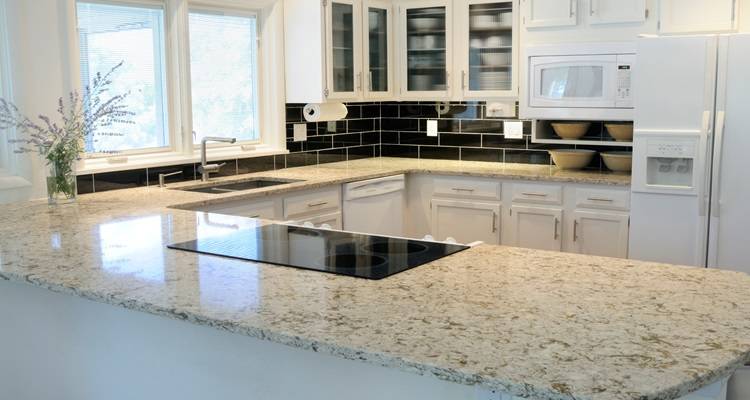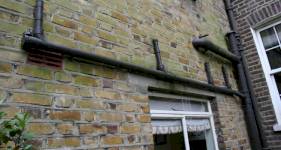Subsidence Repair Costs
- The average cost to repair subsidence is around £10,000
- The job will take approximately 4 - 5 weeks to complete
- A complete pricing breakdown which includes types of subsidence repair methods, along with what such tasks usually involve
- How long the job should approximately take and a general overview of what kind of jobs can be performed
- How to find and hire a subsidence repair specialist
Is your house subsiding? Is there evidence of subsidence cracks and you need to know the costs to repair it?
Subsidence is a word that's dreaded by homeowners all over. It can be an absolute tragedy and can affect the structural safety of your house as well as its value.
But how much will it cost to fix?
The cost of repairing subsidence on average can range from a few hundred pounds up to the £50,000 or even more.
We've created this price guide so you can calculate exactly how much subsidence repair will cost you.
Ready for a quote?
We have a range of subsidence repair specialists ready to offer you a free quote!
Take a look below for all the cost details...
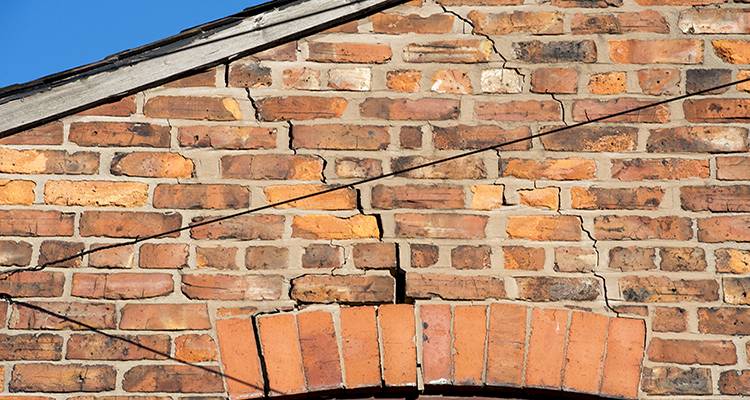
£10,000
Table of Contents
- How Much Does it Cost to Fix Subsidence?
- Supply Costs Only
- Additional Costs
- Labour Costs and Timescales
- Cost Factors of Fixing Subsidence
- What's Involved in Repairing Subsidence?
- Can I Fix Subsidence Myself?
- Building Regulations & Planning Permission for Fixing Subsidence
- Causes of Subsidence
- Subsidence Repair Methods
- Hiring Contractors for Repairing Subsidence Checklist
- FAQs
- Sources
How Much Does it Cost to Fix Subsidence?
In the worst-case scenarios of subsidence, your house may need to have some serious underpinning installed. This is not only very costly, but it is also somewhat disruptive.
The prices for this work can reach highs of around £50,000 in severe cases. This is quite rare, however. Most subsidence repair costs are a lot less than this, and the average cost you can expect to pay is around £5000-£15,000.
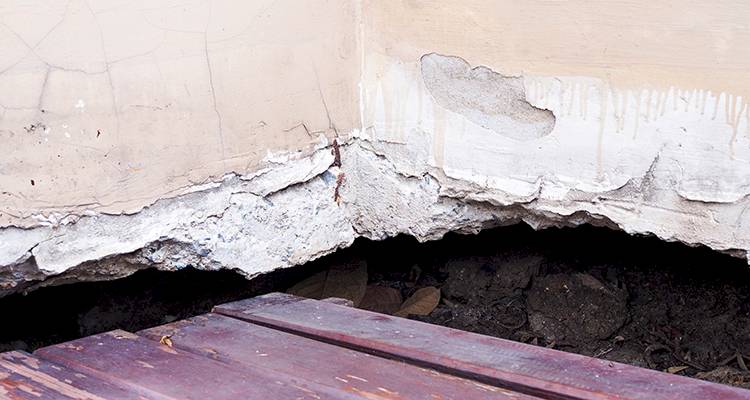
Fixing subsidence is never a quick or easy job. You must follow a process that includes spotting the signs of subsidence, getting a diagnosis, and then moving on to fix the problem depending on how severe it is.
Should a large tree near a house be felled in stages to avoid subsidence? If so, what sort of timescale am I looking at?
Subsidence Repair Prices
Below are the estimated costs for hiring a tradesperson to fit mid-range (£25/m2) floor tiles in different sized rooms.
| Type of Job | Average Cost |
|---|---|
| Underpinning Single Wall in 2 Bed Terraced (4m) - Mass concrete Method | £5000-£7000 |
| Underpinning Single Wall in 3 Bed Terraced (5mx4m) - Mass concrete Method | £12,000-£14,000 |
| Underpinning Single Wall in 4 Bed Detached (8mx6m) - Mass concrete Method | £20,000-£22,000 |
| Underpinning Single Wall in 2 Bed Terraced (4m) - Mini Piling Method | £10,000-£12000 |
| Underpinning Single Wall in 3 Bed Terraced (5mx4m) - Mini Piling Method | £22,000-£24,000 |
| Underpinning Single Wall in 4 Bed Detached (8mx6m) - Mini Piling Method | £34,000-£37,000 |
| Underpinning Single Wall in 2 Bed Terraced (4m) - Resin Injector Method | £4000-£5000 |
| Underpinning Single Wall in 3 Bed Terraced (5mx4m) - Resin Injector Method | £10,000-£12,000 |
| Underpinning Single Wall in 4 Bed Detached (8mx6m) - Resin Injector Method | £15,000-£17,000 |
Supply Costs Only
Below is a list of the costs that you can expect to spend on subsidence repair without the labour costs:
| Type of Job | Average Cost per m2 |
|---|---|
| Mass Concrete Method | £350-£400 |
| Resin Injector Method | £500-£600 |
| Piling Method | £1200-£1350 |
Additional Costs
Below is a list of additional costs that may come up when it comes to fixing subsidence issues:
- Tree Stump removal - £150-£1000
- Removing and replacing individual bricks - £110-£130 per m2
- Interior decoration - £50-£100
- Gardening - £40-£80
Labour Costs and Timescales
The cost you can expect to spend on labour for fixing subsidence will depend a lot on the severity of the job and the methods used to fix it.
As an example, the average cost for a mass concrete underpinning is around £12,000-£14,000 for labour, and the job will take an average of approximately 4-5 weeks.
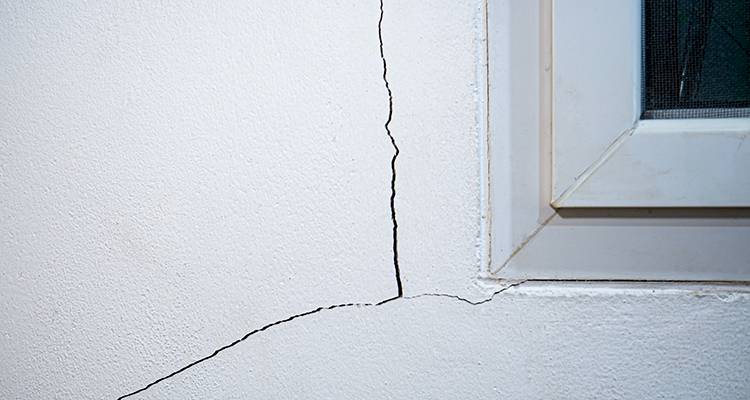
The prices will vary a lot, however, depending on many factors, including your location and how much work needs to be done. You may also sometimes have to hire additional labourers in some cases.
For example, if you need to remove or add a floor in your property, a structural engineer will likely need to perform inspections for this type of work.
Cost Factors of Fixing Subsidence
There are a number of things that may affect the overall cost of the job. Below is a list of the things that could affect the cost of fixing subsidence:
Type of Subsidence Repair Method
The type of subsidence repair method that is used can affect the overall cost of the job. For example, the value of the mass concrete method of underpinning on a 2-bedroom terraced house is around £5000-£7000 on average, whereas the cost for the mini piling method on the same size property is around £20,000-£22,000 on average.
Size of Property
The size of your property can also affect the overall cost of the job by quite a significant amount. For example, the price for Resin injector underpinning on a 2-bedroom terraced house is around £4000-£5000 on average.
In contrast, the same type of subsidence fix on a four-bedroom detached house is around £15,000-£17,000 on average.
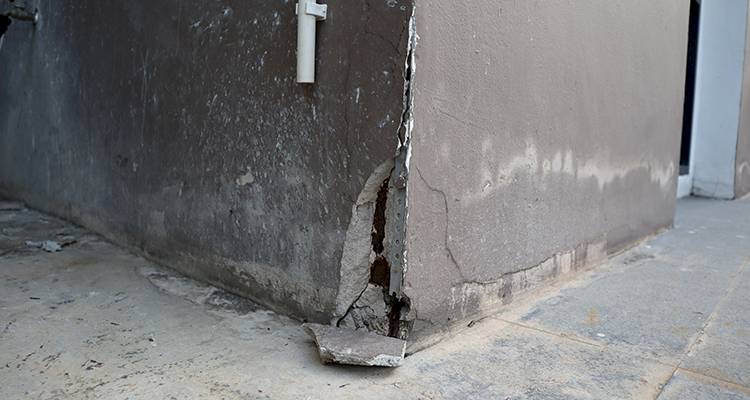
Extent of Damage
The cost of the job can vary depending on the extent of the damage. The more damage there is to the property, the more difficult the job will be to fix, and the job will also take much longer.
With this in mind, properties that have more damage than others can expect to pay more for the overall cost of the job. Those with very extensive damage can expect to pay anywhere up to around £50,000.
Location of Property
The location of your property can affect the cost of the job. Those based in London can expect to pay anywhere from £1000-£10,000 more for the total cost of the job than those based in the North or other parts of the UK.
What's Involved in Repairing Subsidence?
Repairing subsidence is not a job that can be completed yourself. It is a very complicated job that takes a long time. The following steps are involved when you find out that you have a subsidence problem at your property:
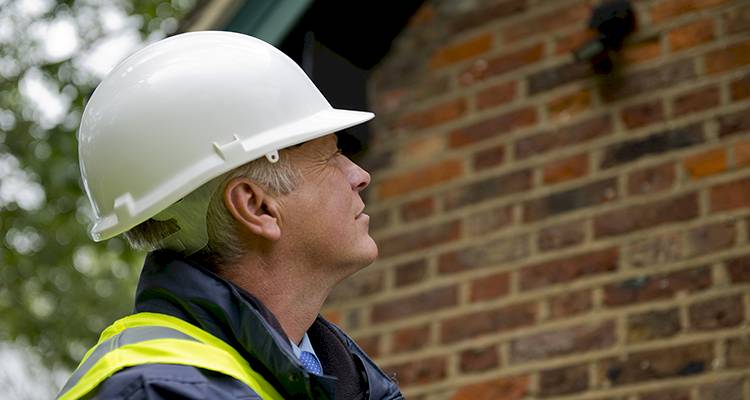
Step One – Identifying the Subsidence
You should ensure that you keep a lookout for any warning signs, especially if you have noticed some already. As soon as you notice that there may be a problem, call a local contractor to inform them of the issue so that they can inspect the problem.
Below is a list of some of the most common subsidence warning signs:
- Loose bay windows.
- Doors and windows sticking.
- Wallpaper ripples.
- Diagonal cracks that appear wider at the top than the bottom.
- Signs that a new extension may be moving away from the rest of the property.
Remember that these signs may not be the result of subsidence, so ensure you get someone out to inspect it before you begin to worry too much
Step Two – Diagnose the Problem
The faster you can recognise your subsidence problem, the faster it can be fixed. Your chosen contractor will be able to recommend the best course of action once the subsidence problem has been confirmed.
Determining whether or not subsidence is really a problem at your property can take a lot of time. Your property may need to be monitored over some time to ensure that the cracks in your home are a result of a more severe problem.
Step Three – Fixing the Issue
Professional underpinning is usually the best course of action to fix and prevent further subsidence. Carrying out this type of work will help to avoid any further movements in the foundations. This process can be lengthy and costly.
Some other solutions may be attempted before underpinning; this is usually a last resort in extreme cases. In some instances, tress or pipes can be removed or moved as a quick solution to the problem.
There are five main steps of underpinning a property. Below are the steps involved with this type of job:
- Excavation – The contractor will dig trenches where the concrete will be poured into, and any reinforcing beams will be added
- Reinforcement – Concrete is then poured into these areas carefully and left to cure to monitor the existing soils and structures
- Infilling – All of the soil that was removed is then replaced
- Repairs – Any defective brickwork is removed, and wall cavity ties are replaced
- Final fixes – Any defective materials are removed to be replaced, and the property is then left in a presentable condition
Can I Fix Subsidence Myself?
Underpinning is a very complex job that can't be completed as a DIY project. There may be some parts of the job that you can complete yourself if the issues are small such as filling in cracks and redecorating.
Subsidence problems can be detrimental to the structure of your home, and so you will need to hire professionals to ensure that the job is completed correctly.
Building Regulations & Planning Permission for Fixing Subsidence
You will need to submit a planning application if your home needs underpinning work. This usually costs around £50-£170. You will also need a buildings regulations application which can cost around £750 depending on the type of work that is required.
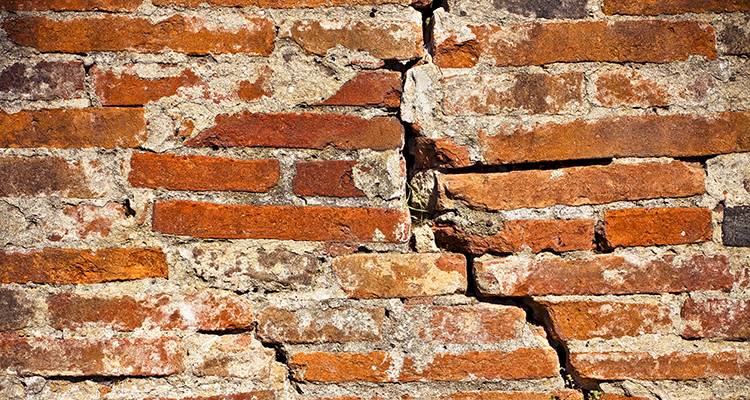
All of the work will need to comply with the construction, design and management regulations. It's essential that you inform your local building control department about any work that needs to be completed for subsidence.
The actual prices may depend on your location; however, your structural engineer will be able to assist with all of the planning permission and buildings regulations.
Causes of Subsidence
There are several potential causes of subsidence. It is usually caused by one of the following:
Clay Shrinkage
This is the most common cause of subsidence. Clay contains a lot of water, and so soil that contains a lot of clay can dry out if nearby vegetation takes up a lot of the water content. The volume of the soil then decreases, and this causes the foundations to subside.
Trees
Trees can sometimes cause structural problems to a property because of the shrinkage of clay subsoil underneath the foundations. Trees can also cause the ground to swell up, which can also cause problems to the structure of your home.
Water Escaping
If water is escaping from the pipes beneath your home, this can ash away some of the particles of the soil underneath your home. When this happens, you will have less soil under the house, and this can result in the foundations subsiding.
Mining
Buildings can sometimes subside due to mines underneath collapsing. This can even happen in old unused mines.
Poor Ground Quality
After a home is built, it can take some time for it to fully settle on the ground below. If the ground is poor, the house may subside more than it should, and this can be dangerous and damaging to the home.
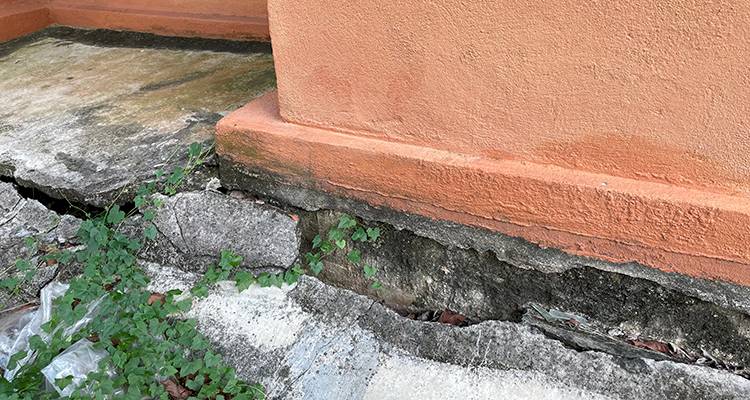
Subsidence Repair Methods
There are a range of methods for fixing subsidence. Below is a list of the main methods along with the pros and cons of each type:
Mass Concrete Method
This is the most common and most straightforward method. Holes are dug in the ground around the existing foundations and concrete is then poured into these holes to provide additional strength to the existing foundations.
This is the most common option and, therefore, also the most cost-effective, which is
great if you don't have a big budget. The average cost for this type is around £1,400-£1600 per square metre.
Pros
- ✔ Cost-effective
- ✔ The property can sometimes be used during the repair
- ✔ No heavy machinery needed
- ✔ Retains and improves the existing foundations
Cons
- ✖ Time-consuming
- ✖ Concrete has to be left to cure
- ✖ Limited depths
Mini-Pile Method
Piling is best suited for deeper foundations. Specialist equipment is used in this method for deeper foundations with variable conditions. With this in mind, this is the most expensive option for fixing subsidence.
This method is best suited for when you need to transfer foundations to more suitable soil and for foundations that need to be dug in further for additional support. Due to the additional depth, the use of a rig may increase the costs by quite a bit.
The average cost for this type is around £2500-£2800 per square metre.
Pros
- ✔ Useful for restricted areas
- ✔ Less disruptive
- ✔ Suitable for variable ground conditions
Cons
- ✖ Requires much more work
- ✖ Requires specialist machinery
- ✖ Most expensive method
Expanding Resin Injector Method
This method involves a type of glue that is mixed with a hardener and then injected into the ground underneath the existing footings. This results in a chemical reaction that makes the formula expand, and it fills out any gaps or cracks that may be present.
It also hardens anything in its path to make it much more robust. Using this method a few times can cause the property to rise, which can allow you to level it further.
The average cost for this type is around £1100-£1300 per square metre.
Pros
- ✔ Fast and efficient
- ✔ Clean
- ✔ Non-disruptive
- ✔ Budget-friendly
Cons
- ✖ Less stable than other methods
Hiring Contractors for Repairing Subsidence Checklist
There are a few things you will need to consider before hiring someone to fix your subsidence problem for you. Below is a list of some of the main things that you should consider when looking for the right contractor for the job:
- Does the contractor offer any guarantees with their work?
- How much is the work to complete? – Ask for a breakdown of costs so you can ensure you are paying a reasonable price for each element of the job.
- Is the contractor experienced in fixing subsidence issues?
- How many years' worth of experience does the contractor have in fixing subsidence?
- How many contractors will carry out the job?
- Will the contractor fix any issues that may arise?
- Will the contractor take care of any relevant waste removal?
- Do you need to hire any additional contractors for different parts of the work?
- Which method of subsidence repair will be used?
FAQs
Does subsidence devalue a property?
Do I have to declare subsidence when selling a property?
What warning sounds can I look out for when it comes to subsidence?
What are the causes of subsidence?
Do I need to move out of my home during the repairs?
Sources
https://hoa.org.uk/advice/guides-for-homeowners/for-owners/subsidence
https://www.homeprotect.co.uk/subsidence-insurance/step-by-step-subsidence-guide
https://www.dartandco.co.uk/treat-subsidence-damage
https://www.onlinemortgageadvisor.co.uk/blog/what-should-i-declare-when-selling-my-home



